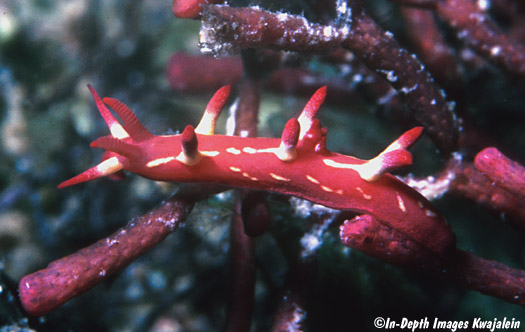
Ceratodoris kondoi is one of two species that not only are colored very much alike, they live in the same areas and eat the same bryozoan. It is easy to inadvertently lump them all together under one species. (I speak from personal experience.) However, there are consistent external and internal anatomical differences between C. kondoi and its lookalike, Ceratodoris nakamotoensis. There is a huge difference between the two species in the structure of the radular teeth, but that's not something you can determine without a microscope and a dead animal. One of the external differences is that Ceratodoris kondoi (at least those here in the Marshalls) tends to be more pink as opposed to the darker magenta of C. nakamotoensis. Also, C. kondoi is more slender than C. nakamotoensis and has only four pairs of dorso-lateral processes (the ones in the photo below that are light yellow at the base and dark pink at the tips). One of these pairs is in front of the rhinophores, while the other three are behind the rhinophores. In C. nakamotoensis, there are five pairs, one in front of the rhinophores and four pairs behind. There may be one other possible external difference, at least according to our photographs. Ceratodoris nakamotoensis has a single middorsal process (similar to the paired ones) a bit in front of the gills. Although I haven't seen Hamatani's original description, both Gosliner's (2004) review of Okenia and the Sea Slug Forum indicate that a similar middorsal process is present in C. kondoi. Other pictures on the web attributed to C. kondoi as well as the photo on page 145 in Gosliner (2004) do show four pairs of dorso-lateral processes and a distinct middorsal process, exactly what the species is supposed to have. However, that middorsal process doesn't seem to be in any of our photographs of the animal. I can't explain the discrepancy. I must say, though, that those web photos show animals that I think more closely resemble the Marshall Islands C. nakamotoensis in color and pattern, despite having one fewer pair of dorso-lateral processes. I think this group of species warrants another look. Ceratodoris kondoi was first reported in the Marshalls from Enewetak and Kwajalein Atolls by Gosliner (2004).

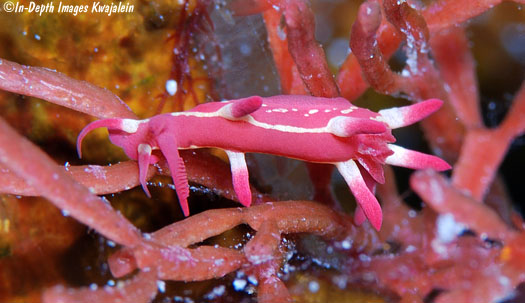
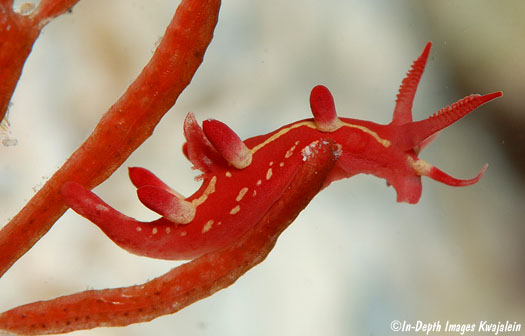
The two shots below show the zooids on the prey bryozoan, Tropidozoum cellariiforme.
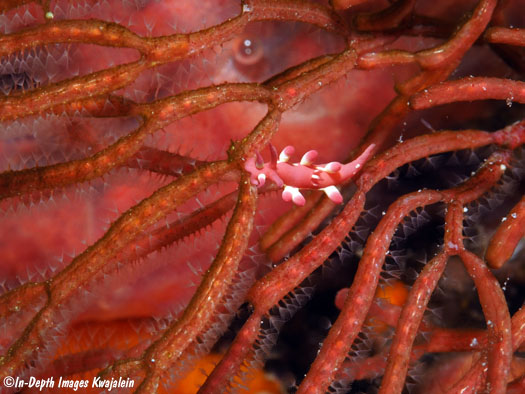
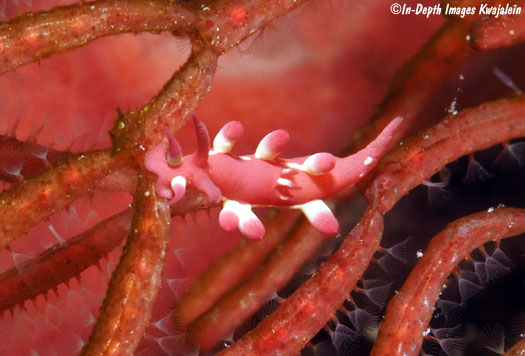
Here are thre individuals on a colony of their prey bryozoan.
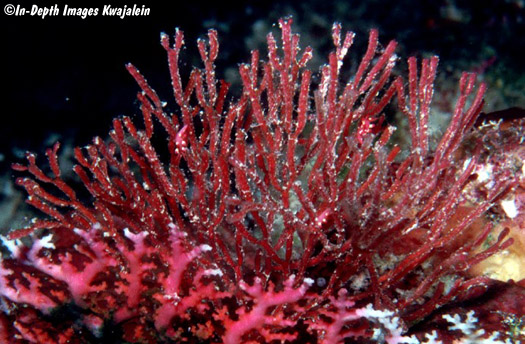
The specimen below was found on its bryozoan prey on a Kwajalein lagoon pinnacle on 5 September 2010. The bryozoan polyp-like zooids can be seen extending from the branches in the two photos below.
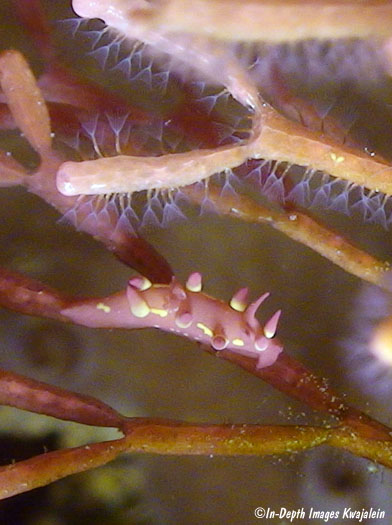
One of many specimens seen on 8 September 2013.
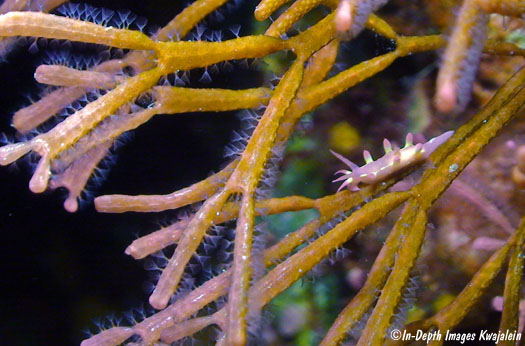
Three specimens can be seen on this bryozoan colony on a Kwajalein Atoll lagoon pinnacle.
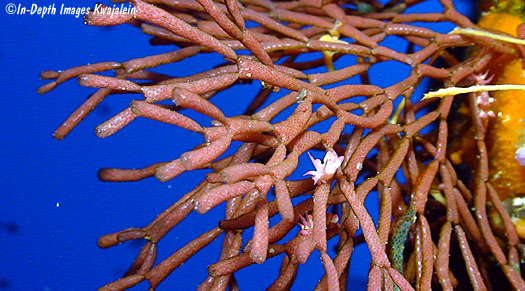
And two more here.
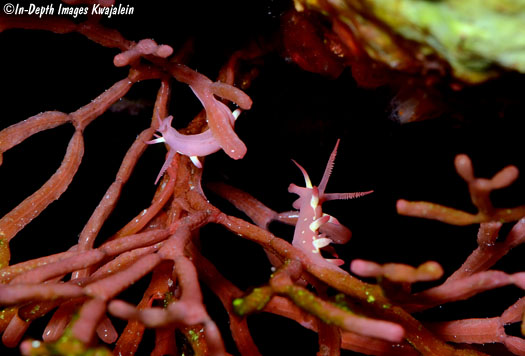
Created 3 January 2007
Updated 17 December 2023